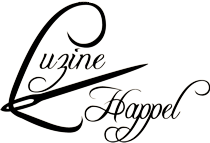Completion
After finishing the whitework, I print a crown that is not too high and is as wide as my border.
It is embroidered with 2 strands of the 6-ply stranded cotton from Anchor in color 888.
However, I will design the basket differently.
So far I have implemented all the main components of Schwalm whitework with my embroidery. These include on surface embroidery stems with forks and tendrils, rounded and pointed, divided and undivided leaves, Blanket stitch eyelets, small flowers and other vegetal elements as well as small hearts, on border stitches Eyelash stitches, Blanket stitch half-eyelets scallops, Blanket stitch scallops, 2short-2long, knife points and Blanket stitches as well as all three different withdrawn thread patterns (simple, Limet and openwork), some fillings without thread withdrawing from the area of early Schwalm whitework and a needle lace filling. All that’s missing is a needle-weaving hemstitch and a needle lace border to immortalize the complete range of possibilities on one workpiece.
Unfortunately, the basket area of the crown is too small for a nice needle-weaving hem. That’s why I use the Peahole hemstitch (coton à broder No. 30).
Year and name abbreviation added,
then the piece can be hemmed. Since I also want to use the band hanging on the wall, I decide on tunnel hems at the top and bottom. The hem should be 2.5 cm wide and have a 1 cm fold. The long sides are attached first. It is important to make sure that you make the fold on the narrow sides before placing the hem on the long sides.
This is the only way the tunnel entrance can look neat and tidy.
Sewing the hem corners through the many layers of fabric is a bit tedious, but with a little patience you can do it.
I quickly look for a free area for noting down the needed hours and then I view the entire embroidery again.
I decide to fill the basket handles after all, withdraw a Limet grid 3:1 and embroider the areas with Diagonal Cross stitches (coton à broder No. 20). Make sure to work the stitches from bottom to top on one side of the basket and from top to bottom on the opposite side in order to get a mirror image of the pattern.
I also don’t like the area with the 3 flowers.
Therefore, I decide to fill the petals of another flower with Satin stitches (2 strands of 6-ply stranded cotton ). The third flower should not be processed further so that the different design options can be kept in mind for the future.
And then into the cooking pot – with enough water and a little washing powder.
Soon all the dirt is pulled out of the old linen and a dark broth forms.
After a long soaking time and a short boil, I leave the piece in the cooling water for a while, then rinse it thoroughly and lay it between terry towels to dry.
While still slightly damp, first carefully iron the hem from the right and then the entire area from the left.
The result will be shown in a final blog post on this topic.
Schwalm Band – Outline Design
Schwalm Band (1) Design Transfer
Schwalm Band (2) – Preparatory work of section 5
Schwalm Band (3) – Preparatory work of section 4
Schwalm Band (4) – Preparatory work of the sections 3 – 1
Schwalm Band (5) – Filling Patterns of Section 5 II
Schwalm Band (6) – Filling Patterns of Section 5 I
Schwalm Band (7) – Filling Patterns of Section 4 b II
Schwalm Band (8) – Filling Patterns of Section 4 b I
Schwalm Band (9) – Filling Patterns of Section 4 a II
Schwalm Band (10) – Filling Patterns of Section 4 a I
Schwalm Band (11) – Filling Patterns of Section 3 II
Schwalm Band (12) – Filling Patterns of Section 3 I
Schwalm Band (13) – Filling Patterns of Section 2 II
Schwalm Band (14) – Filling Patterns of Section 2 I
Schwalm Band (15) – Filling Patterns of Section 1 II
Schwalm Band (16) – Filling Patterns of Section 1 I






























































